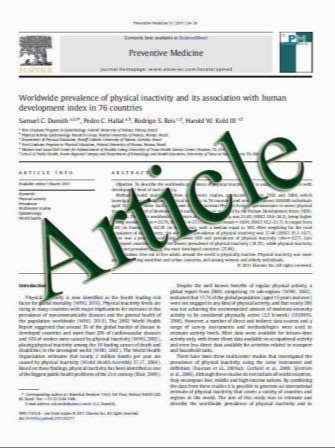PKA-induced phosphorylation of ERa at serine 305 and high PAK1 levels is associated with sensitivity to tamoxifen in ER-positive breast cancer
- نوع فایل : کتاب
- زبان : انگلیسی
- مؤلف : Marleen Kok, Wilbert Zwart , Caroline Holm , Renske Fles , Michael Hauptmann, Laura J. Van’t Veer , Lodewyk F. A. Wessels , Jacques Neefjes ,
- چاپ و سال / کشور: 2010
Description
Phosphorylation of estrogen receptor a at serine 305 (ERaS305-P) by protein kinase A (PKA) or p21-activated kinase 1 (PAK1) has experimentally been associated with tamoxifen sensitivity. Here, we investigated the clinical application of this knowledge to predict tamoxifen resistance in ER-positive breast cancer patients. Using immunohistochemistry, a score including PAK1 and coexpression of PKA and ERaS305-P (PKA/ERaS305-P) was developed on a training set consisting of 103 patients treated with tamoxifen for metastatic disease, and validated on 231 patients randomized between adjuvant tamoxifen or no treatment. In the training set, PAK1 levels were associated with tumor progression after tamoxifen (HR 1.57, 95% CI 0.99–2.48), as was co-expression of PKA and ERaS305-P (HR 2.00, 95% CI 1.14–3.52). In the validation set, a significant tamoxifen benefit was found among the 73% patients negative for PAK1 and PKA/ERaS305-P (HR 0.54, 95% CI 0.34–0.87), while others (27%) were likely to have no benefit from tamoxifen (HR 0.88, 95% 0.42–1.82). The test for interaction showed a significant difference in recurrence-free survival between groups defined by PAK1 and PKA/ERaS305-P (P = 0.037). Elevated PAK1 and PKA/ERaS305-P appeared to influence tamoxifen sensitivity. Both PAK1 and PKA/ERaS305-P levels were associated with sensitivity to tamoxifen in breast tumors and the combination of these variables should be considered in predicting tamoxifen benefit.
Breast Cancer Res Treat (2011) 125:1–12 Received: 23 September 2009 / Accepted: 9 February 2010 / Published online: 9 March 2010 Springer Science+Business Media, LLC. 2010


